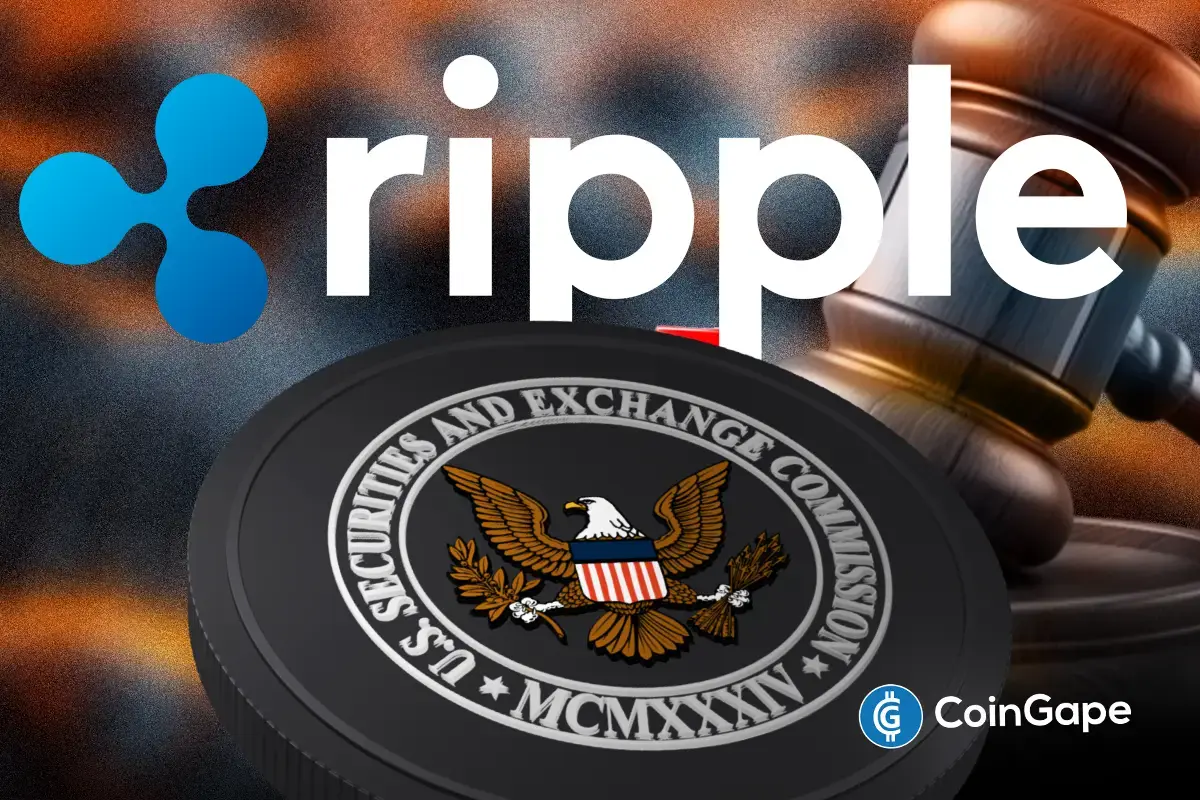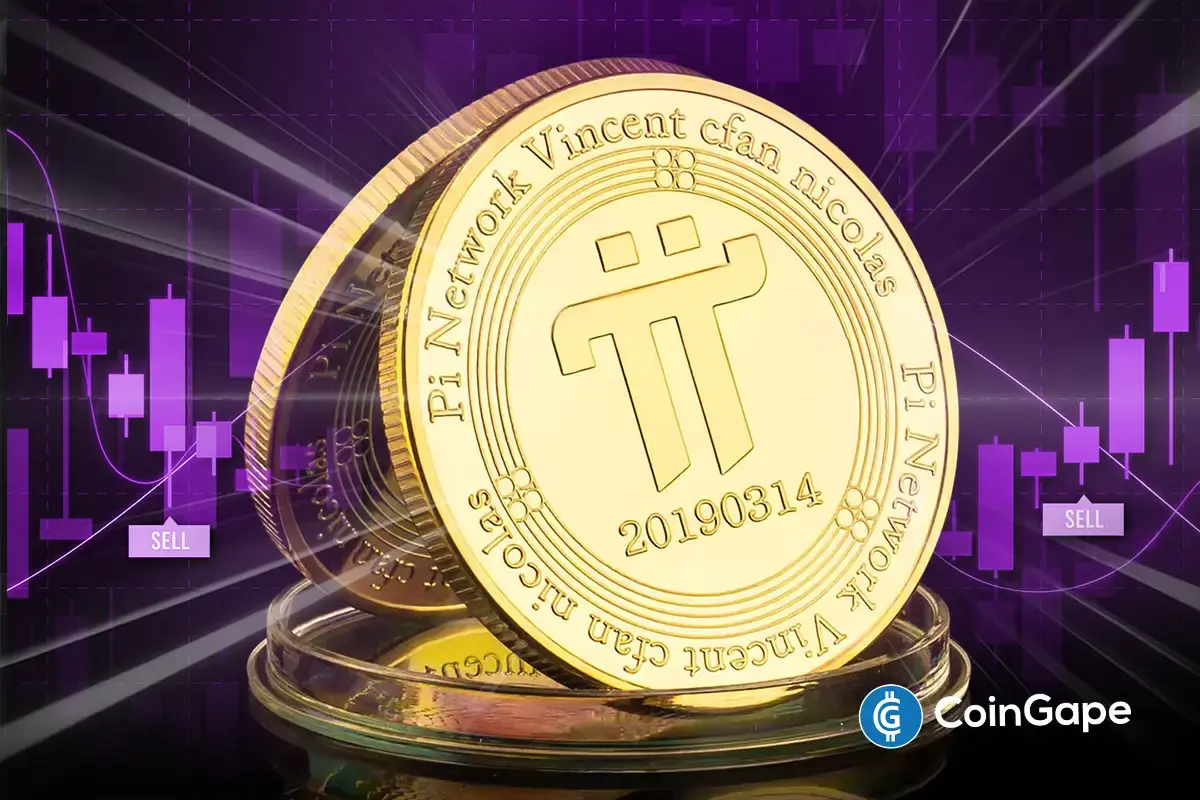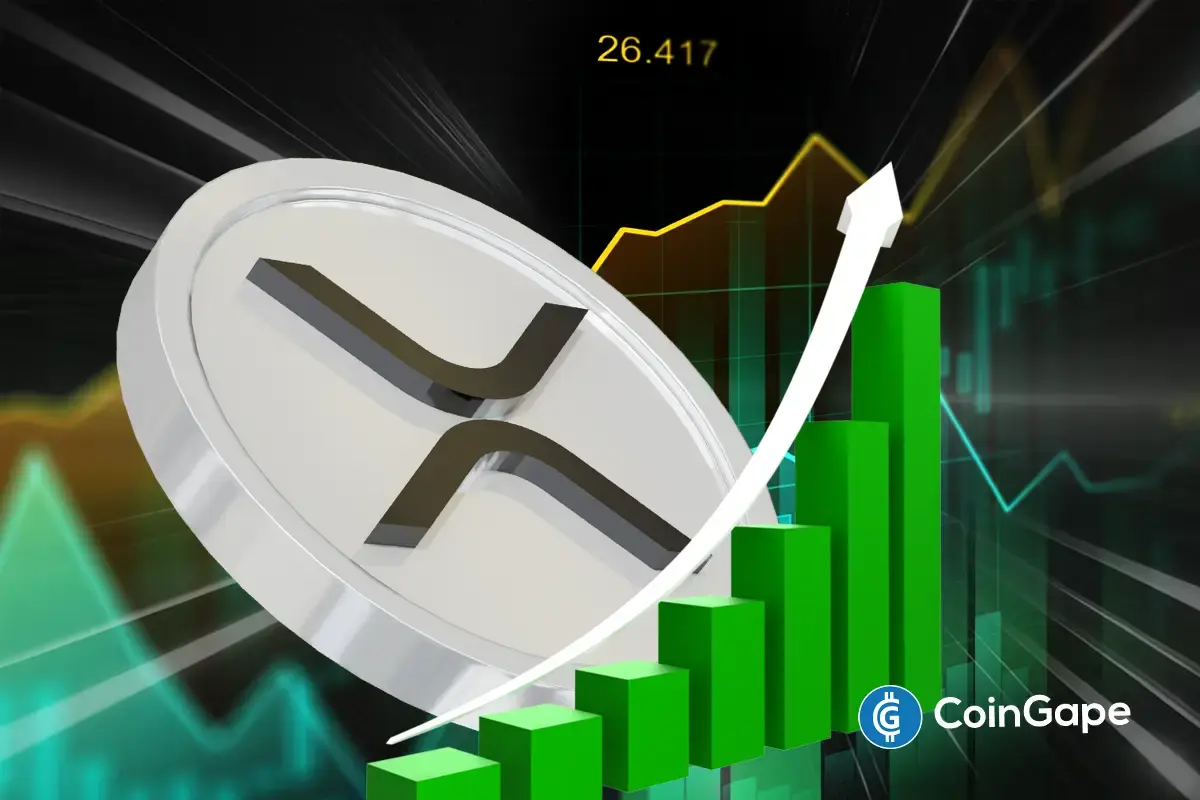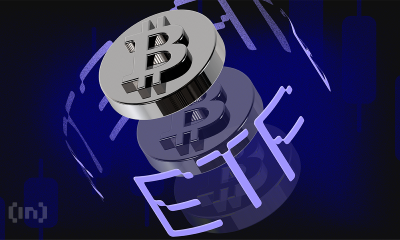Altcoin
Grayscale Files For Cardano ETF With NYSE as Race Heats Up

Grayscale Investments has submitted an application to the New York Stock Exchange (NYSE) for a Cardano exchange-traded fund (ETF). This marks a step in the growing interest in cryptocurrency ETFs. The move is part of the company’s strategy to expand its crypto ETF offerings, following its recent filings for XRP, Solana, and Litecoin ETFs.
The Cardano ETF filing adds to the increasing list of institutional moves aiming to provide regulated exposure to popular cryptos.
Grayscale Joins Race with Cardano ETF Application to NYSE
In a recent filing, Grayscale submitted its proposal for a Cardano ETF with the NYSE, further diversifying its crypto offerings. The filing comes as part of a larger push by Grayscale to expand its presence in the growing cryptocurrency market. The firm has already filed similar ETF applications for other popular cryptos, such as XRP, Solana, and Litecoin.
With the increasing institutional interest in digital assets, this move is a significant step toward regulated exposure for institutional investors seeking access to Cardano.
Grayscale’s Cardano ETF application comes when institutional interest in cryptocurrency is expanding. With Cardano (ADA) becoming one of the top-performing assets, this ETF could offer a regulated route for traditional investors to gain ADA exposure.
The Cardano network has gained substantial recognition for its focus on scalability, security, and sustainability, factors that appeal to investors.
Moreso, these developments come when the US SEC seeks public comments on Grayscale’s Litecoin ETF proposal, allowing for a 21-day submission period. Litecoin ETFs are gaining attention as the SEC assesses Grayscale’s request to convert its Litecoin Trust into an exchange-traded product.
Recently, asset managers like Grayscale and Coinshares have taken steps to expand crypto ETF offerings, signaling growing interest.
Competition in the Crypto ETF Space
Grayscale’s filing is part of a trend in the crypto market, where multiple asset managers are vying to offer ETFs linked to popular digital assets. Recently, other firms, including WisdomTree and Bitwise, have submitted similar applications to the U.S. Securities and Exchange Commission (SEC) for XRP ETFs.
Additionally, Swedish asset manager Virtune AB launched a Cardano exchange-traded product (ETP) on Nasdaq Helsinki, catering to institutional investors.
As the market continues to mature, more financial institutions are exploring the idea of crypto ETFs, especially for major cryptos like Cardano. The introduction of a Cardano ETF by Grayscale will provide more opportunities for investors looking to diversify their portfolios with ADA exposure.
Impact on Cardano Price
The introduction of a Cardano ETF could have a significant effect on ADA price and market sentiment. As more institutional investors gain exposure to Cardano, increased demand could lead to upward pressure on ADA price. Currently, the ADA remains relatively stable, but the potential for more institutional capital entering the space through an ETF could cause a rise in its price.
In addition, if Cardano price holds above the $0.67–$0.81 support range, it could signal strength and set the stage for an ADA price rally. Technical indicators, including the TD Sequential buy signal, further support the possibility of a bullish reversal. However, if Cardano price fails to maintain this support, a drop below the range will lead to further declines.
At the time of writing, Cardano price stands at $0.7068, reflecting a 3% increase in the past 24 hours. The market cap has risen to $24.87B, and the trading volume is up by 11.15%, reaching $752.82M.
Disclaimer: The presented content may include the personal opinion of the author and is subject to market condition. Do your market research before investing in cryptocurrencies. The author or the publication does not hold any responsibility for your personal financial loss.
Altcoin
Why the US SEC Is Delaying the Ripple Case?

The Securities and Exchange Commission’s (SEC) decision to drop lawsuits against several major crypto players has left the Ripple case as a notable exception. Recently, the US SEC dismissed litigations against Kraken, Cumberland, and Consensys, sparking curiosity about the status of the XRP lawsuit. Fox Business journalist Eleanor Terrett took to X to share insights on the possible reasons behind the SEC’s delay in the Ripple case.
Let’s take a closer look at the Ripple case and the SEC’s decision to exclude the platform while dropping lawsuits against other crypto companies.
Is US SEC Further Delaying the XRP Lawsuit?
In her recent X post, Fox Business reporter Eleanor Terrett shared insights on the possible reasons for the SEC’s delay in the XRP lawsuit. While the SEC intentionally missed Ripple while dismissing cases against other major firms, Terret stated that the move wasn’t surprising.
Emphasizing the unique circumstances of the Ripple case, Terrett stated, “No Ripple here but I’m not entirely surprised because, again, it is slightly different to these other cases.” The journalist pinpointed the complexities surrounding the XRP lawsuit unlike other crypto lawsuits.
The SEC’s approach to resolving the XRP lawsuit differs from other crypto cases due to an existing injunction. To move forward, the SEC must request Judge Torres to lift this injunction, allowing them to proceed with voting on the withdrawal of the appeal and other related matters.
SEC Dismisses Kraken, Cumberland, Consensys Cases
In a recent development, the US SEC officially announced the dismissal of the crypto lawsuits involving Kraken, Cumberland, and Consensys. This decision comes after the SEC filed a joint stipulation with each company. The filing agrees to dismiss the cases with prejudice, meaning they cannot be refiled.
It is noteworthy that the dismissal comes without any financial implications for the crypto firms. Dropping the lawsuits, the Commission underscored the irrelevance of the cases. However, the regulator clarified that its decision does not imply a change in its position on the underlying issues of the lawsuits.
As highlighted by Terrett, these dismissals do not impact or influence the ongoing XRP lawsuit. Meanwhile, the Ripple lawsuit is expected to follow specific procedures, which may lead to a delay in its conclusion. The settlement process for the Ripple lawsuit involves several steps. This includes the SEC’s request to lift the existing injunction and the subsequent voting on the withdrawal of the appeal.
Recently, attorney Fred Rispoli shared a possible timeline for the Ripple case settlement. He stated that the lawsuit will end within the next 60 days.
How This Delay in the Ripple Lawsuit Settlement Impact XRP Price?
Amidst the complexities and uncertain timeline surrounding the Ripple case settlement, the XRP price faces major corrections. As of press time, XRP is trading at $2.21, with a 5.38% dip in a single day. Over the past week and month, XRP has plummeted by 6.7% and 2.2%, respectively.
Despite this negative trend, a positive sentiment persists among investors, as indicated by a 17.6% surge in trading volume, currently at $3.85 billion. This sparks a bullish prediction for XRP, with analysts foreseeing its ascendance to $11.
Disclaimer: The presented content may include the personal opinion of the author and is subject to market condition. Do your market research before investing in cryptocurrencies. The author or the publication does not hold any responsibility for your personal financial loss.
Altcoin
Blessing or Curse for the Crypto Market?


Crypto market participants, traders, and investors are increasingly divided over the consequences of mass token listings on centralized exchanges (CEXs).
As the discourse intensifies on token listings on CEXs, some industry figures warn of deteriorating listing standards. Meanwhile, others argue that an open listing approach will ultimately benefit the market.
Analysts Challenge Mass Listings on CEXs
Benjamin Cowen, a crypto analyst and founder of Cryptoverse, shared his concerns regarding the declining quality of tokens listed on major exchanges. He criticized exchanges for promoting long-term investing while listing low-quality “shitcoins,” highlighting their hypocrisy in the crypto market.
“Some crypto exchanges are listing shittier and shittier coins. They’ll tell you to focus on fundamentals and long-term investing one day, and then list the most useless garbage no one has even heard of the next,” he stated.
Another analyst, Colin Talks Crypto, further argued that the primary motivation behind these listings is to profit from transaction fees rather than the quality of the projects. Other voices in the debate suggested that exchanges focus on listing tokens when trending and remove them when interest fades.
“They want volume and fees and list when it’s hit and delist when it gets cold. CEXs this cycle have been showing us why DEXs are the future,” an X user remarked.
Indeed, this aligns with the hallmark of Binance Exchange’s delisting guideline. As BeInCrypto reported, the trading platform commits to reviewing the performance of its listed trading pairs. It removes tokens and trading pairs not meeting liquidity and volume thresholds.
Recent listings on Binance, including meme coins from the BNB Chain, such as JELLY, have fueled these criticisms. Against this backdrop, crypto influencer Leonidas expressed frustration with Binance.
“Your listing team just spot-listed four low-cap insider-controlled meme coins that nobody has ever heard of… I’ve watched for the past year as you guys have listed $10m-$20m garbage meme coins over and over while ignoring the largest market cap memecoins with real communities,” the analyst lamented.
Others also speculated that centralized exchanges might engage in pre-listing accumulation before selling to retail investors.
The Case for Mass Listings on Centralized Exchanges
Despite these criticisms, some experts argue that mass listings could benefit the market in the long run. Jason Chen believes that accelerating token listings will desensitize the market. In his opinion, this would remove the speculative hype around new listings and foster a more competitive trading environment.
“There will no longer be a listing effect, no more premium, and everything will return to a free game state,” Chen explained.
Changpeng Zhao (CZ), Binance’s founder, agreed with this perspective, noting that listing a coin should not affect the price. While listing provides liquidity, allowing for freer entry and exit, it may influence the price in the short term.
However, according to CZ, this should be very short-term. In the long run, prices should be determined by the project’s development. This also aligns with Binance’s listing and delisting criteria, which analyze elements such as the team’s commitment to the project, the level and quality of development activity, and the network and smart contract stability.
“The DEX model is very good. All coins are listed and people can choose for themselves,” CZ added.
Crypto trader Paul Wei also supported this argument but cautioned against oversimplifying the relationship between listings and long-term valuations. He also challenged CZ’s view that coin listings on CEXs like Binance do not influence long-term prices, arguing that listings affect a project’s “development” by enabling freer trading, which shapes price trends.
Meanwhile, recent controversies, such as the Hyperliquid JELLY token incident, highlight the growing divide between CEXs and decentralized exchanges (DEXs). BeInCrypto reported allegations of market manipulation. This has fueled skepticism over centralized exchanges’ practices, hence the CEX vs. DEX crypto debate.
Critics argue that such cases demonstrate the advantages of DEXs, where token listings are unrestricted, and market forces dictate valuations without centralized intervention.
Amidst this ongoing debate, CZ articulated that Coinbase’s recent decision to list BNB perpetual futures was purely on merit. It is also worth noting that Binance recently resolved to include users in its listing and delisting actions, fostering democracy.
The exchange also adopted a secondary listing mechanism. Instead of exclusively listing new tokens on its centralized exchange, it will leverage Binance Wallet to facilitate token launches on decentralized platforms.
Disclaimer
In adherence to the Trust Project guidelines, BeInCrypto is committed to unbiased, transparent reporting. This news article aims to provide accurate, timely information. However, readers are advised to verify facts independently and consult with a professional before making any decisions based on this content. Please note that our Terms and Conditions, Privacy Policy, and Disclaimers have been updated.
Altcoin
Why Is Pi Network Coin Price Up 5% Despite Altcoins Market Correction?

The broader altcoins market has entered a sharp correction today, but Pi Network price is looking the other way with 5% gains in the last 24 hours and moving past $0.85. This comes as a fresh relief rally after Pi Coin faced a steep 20% drop over the past week. Moreover, it seems that investors are looking beyond PI token unlocks along with slowing down exchange deposits.
Why Is Pi Network Coin Price Up Today?
As stated, the Pi Coin deposits to exchanges have dropped significantly, hinting at a potential shift in market activity. Over the past 24 hours, only 1 million PI tokens were deposited across exchanges, against the tens of millions of deposits in the previous week, PiScan data showed.
The most significant transaction during this period was a transfer between exchanges, with tokens moving from Bitget to Gate.io. This drop in deposits can lead to upward price pressure for the Pi Network Coin. As shown in the image below, the total PI balance on centralized exchanges is upwards of 352 million, with OKX exchange alone having 160 million in PI balance and Bitget exchange having over 81 million in PI balance.


Over the past month, the Pi Coin price has crashed all the way from the peak of $3 to now $0.82, eroding more than 75% of investors’ wealth. However, market analysts are still hopeful of its recovery to $3 if three main factors align.
- Mainnet Progress: The launch of a fully open Pi Mainnet could significantly boost demand for PI tokens.
- Exchange Listings: Expanded listings across major exchanges would enhance accessibility and liquidity. After much discussion in social media and despite high expectations, crypto exchange Binance has excluded Pi Network from its listing plan.
- Ecosystem Growth: The development of real-world use cases and strategic partnerships could further drive adoption and utility.
Eyeing Complete Decentralization
Pi Network could be eyeing complete decentralization while embracing crypto and Web3. This has been the latest buzz in the town, keeping investors curious.
π 🤝△
— diange (@Pi_diange) March 28, 2025
It appears to be hinting at a significant partnership that could reshape the crypto or financial landscape. The cryptic message above has sparked speculation about a collaboration between Pi and Web3 (symbolized by the triangle), potentially signaling a step toward a fully decentralized future.
As of press time, the Pi Coin price is trading at $0.831 with a market cap of $5.62 billion. With the current bounce back, the altcoin has broken out of the trendline formation over the past 14 days. If the PI price stays above $0.8340, it could stage a quick recovery to $1.


Altcoins Market Correction
The altcoins market has entered a steep correction today with top players like Ethereum (ETH), XRP, and Solana (SOL), correcting over 5% each. Crypto analyst Ali Martinez highlights a surge in stablecoin reserves across all exchanges, rising from $32.1 billion to $32.8 billion within the past 24 hours.


This sharp increase suggests heightened profit-taking activity in the cryptocurrency market.
Disclaimer: The presented content may include the personal opinion of the author and is subject to market condition. Do your market research before investing in cryptocurrencies. The author or the publication does not hold any responsibility for your personal financial loss.
-

 Market23 hours ago
Market23 hours agoHow the LIBRA Scandal is Undermining Milei’s Trust in Argentina
-

 Market22 hours ago
Market22 hours agoPaul Atkins Reveals $6 Million in Crypto Exposure
-

 Market21 hours ago
Market21 hours agoWill Bitcoin Hit $90,000 in April? Analysts Weigh In
-

 Market17 hours ago
Market17 hours agoShould You Buy Movement (MOVE) For April 2025?
-

 Altcoin17 hours ago
Altcoin17 hours agoDogecoin Price Prediction: Here’s What Needs To Happen For DOGE To Recover Above $0.3
-

 Altcoin23 hours ago
Altcoin23 hours agoBonk Inu Acquires Exchange Art Marketplace, BONK Price To Rally?
-

 Regulation22 hours ago
Regulation22 hours agoUS SEC Chair Nominee Paul Atkins To Prioritize Regulatory Clarity For Crypto Industry
-

 Market18 hours ago
Market18 hours agoCan Cardano (ADA) Reach Back to $1 in April?






















✓ Share: